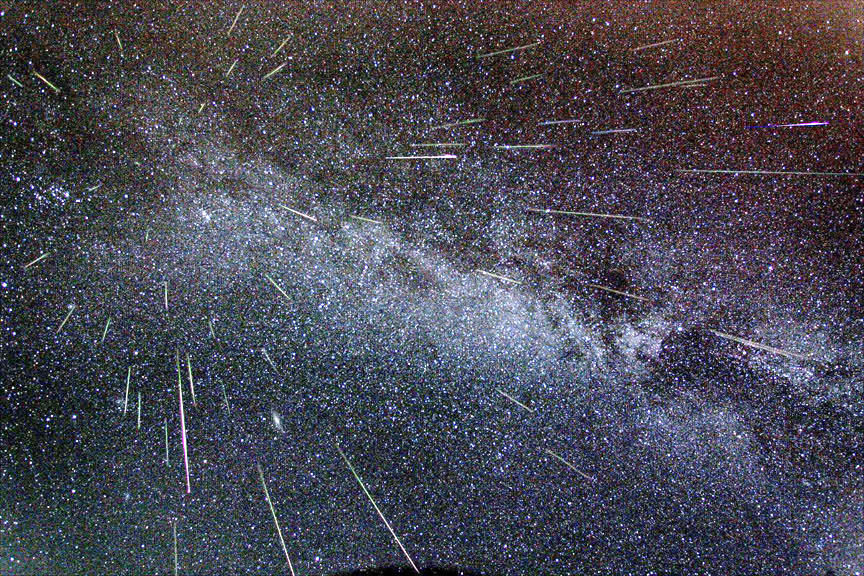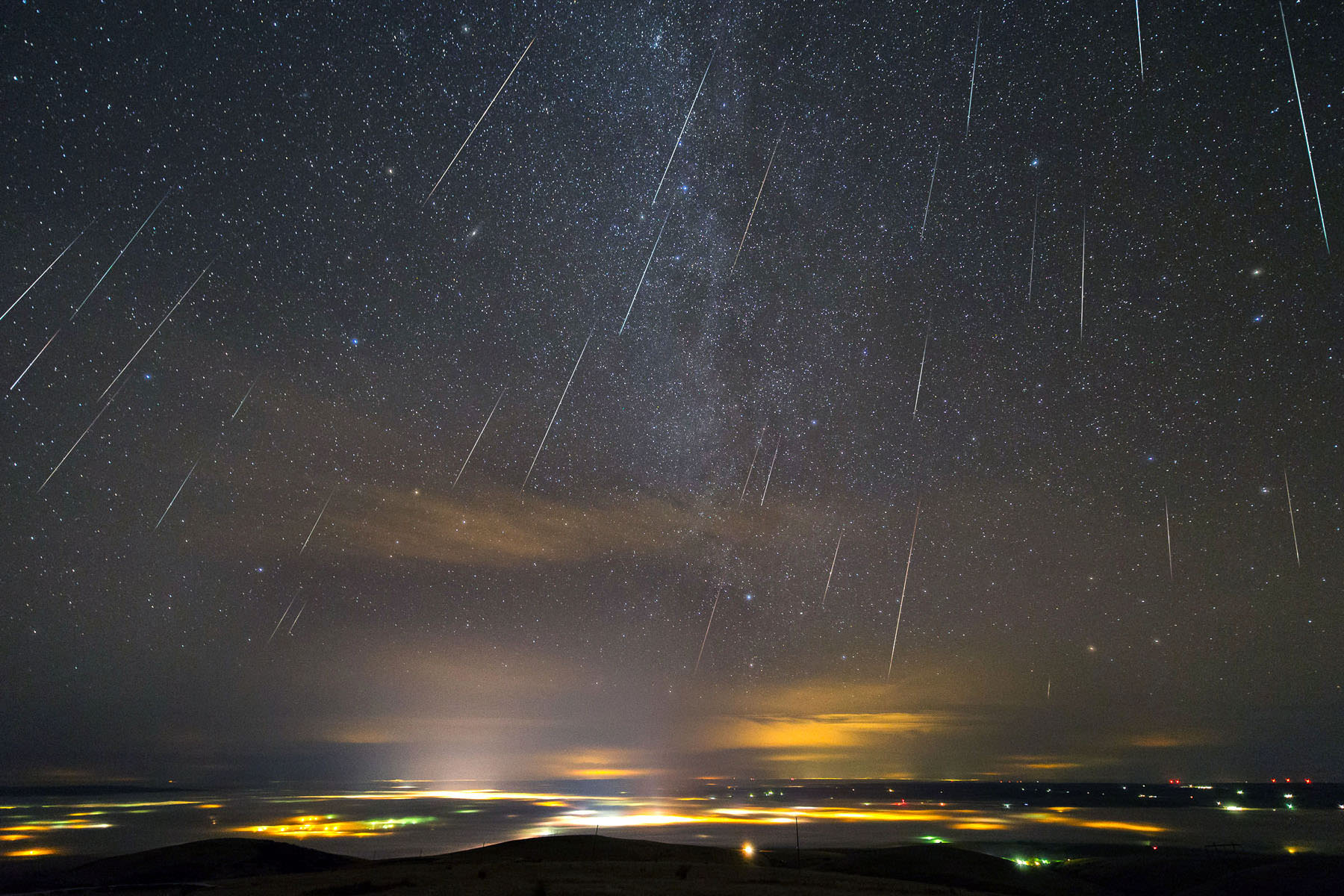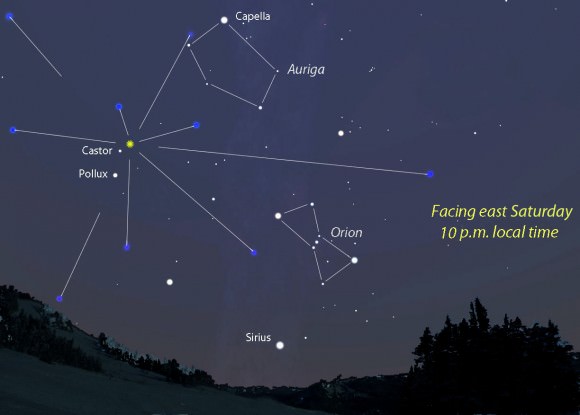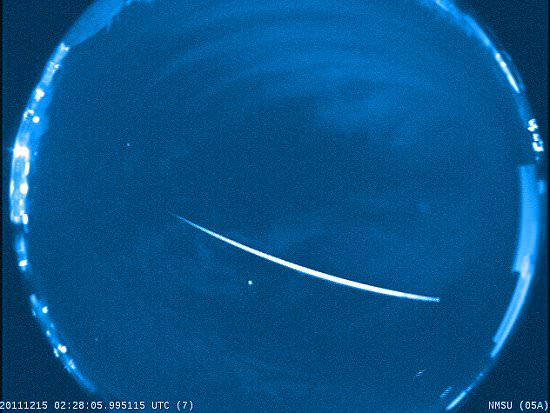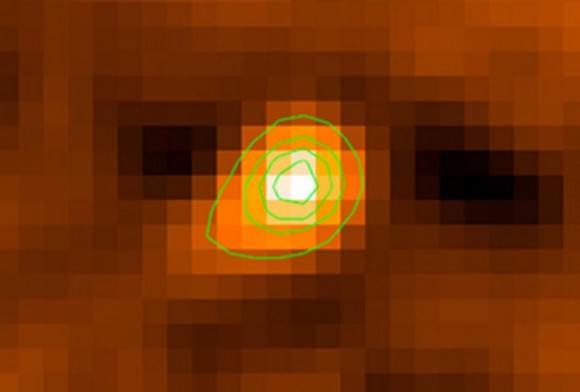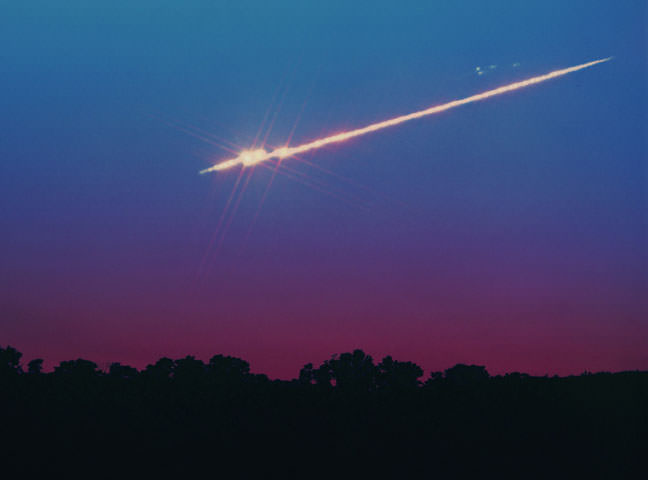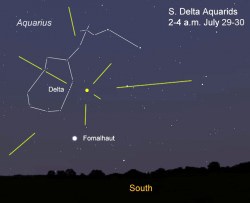Every year in mid-August, Earth plows headlong into the debris left behind by Comet 109P/Swift-Tuttle. Slamming into our atmosphere at 130,000 mph, the crumbles flash to light as the Perseid meteor shower. One of the world’s most beloved cosmic spectacles, this year’s show promises to be a real crowd pleaser.

Not only will the Moon be absent, but the shower maximum happens around 3 a.m. CDT (8 UT) August 13 — early morning hours across North America when the Perseid radiant is highest. How many meteors will you see? Somewhere in the neighborhood of 50-100 meteors per hour. As always, the darker and less light polluted your observing site, the more zips and zaps you’ll see.
Find a place where there’s as few stray lights as possible, the better to allow your eyes to dark-adapt. Comfort is also key. Meteor showers are best enjoyed in a reclining position with as little neck craning as possible. Lie back on a folding lawn chair with your favorite pillow and bring a blanket to stay warm. August nights can bring chill and dew; a light coat and hat will make your that much more comfortable especially if you’re out for an hour or more.
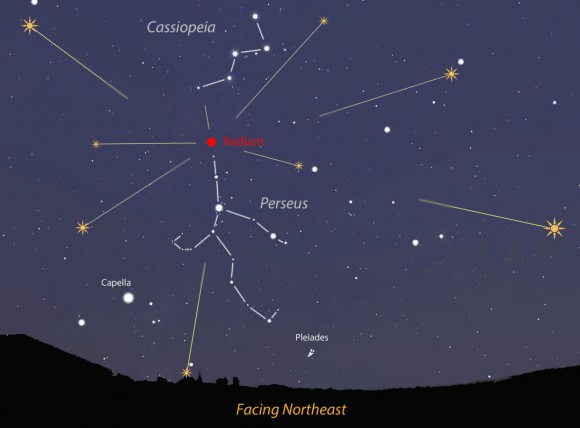
I’m always asked what’s the best direction to face. Shower meteors will show up in every corner of the sky, but can all be traced backwards to a point in Perseus called the radiant. That’s the direction from which they all appear to stream out of like bats flying out of a cave.
Another way to picture the radiant it is to imagine driving through a snowstorm at night. As you accelerate, you’ll notice that the flakes appear to radiate from a point directly in front of you, while the snow off to the sides streams away in long trails. If you’re driving at a moderate rate of speed, the snow flies past on nearly parallel paths that appear to focus in the distance the same way parallel railroad tracks converge.
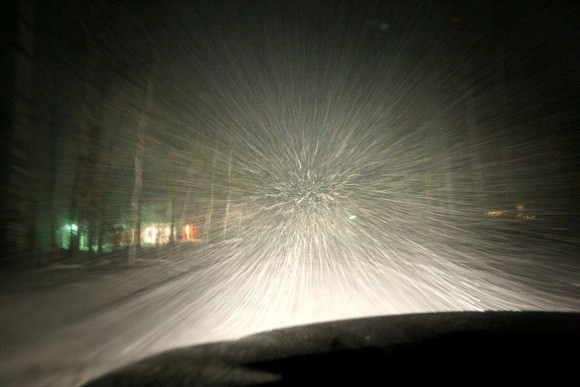
Now replace your car with the moving Earth and comet debris for snow and you’ve got a radiant and a meteor shower. With two caveats. We’re traveling at 18 1/2 miles per second and our “windshield”, the atmosphere, is more porous. Snow bounces off a car windshield, but when a bit of cosmic debris strikes the atmosphere, it vaporizes in a flash. We often think friction causes the glow of meteors, but they’re heated more by ram pressure.
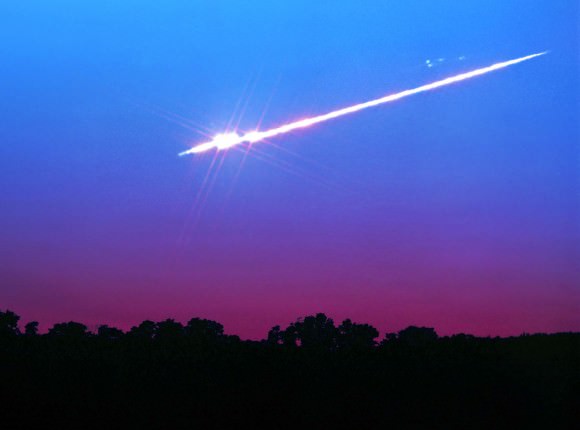
The incoming bit of ice or rock rapidly compresses and heats the air in front of it, which causes the particle to vaporize around 3,000°F (1,650°C). The meteor or bright streak we see is really a hollow “tube” of glowing or ionized air molecules created by the tiny rock as its energy of motion is transferred to the surrounding air molecules. Just as quickly, the molecules return to their rest state and release that energy as a spear of light we call a meteor.
Imagine. All it takes is something the size of a grain of sand to make us look up and yell “Wow!”
Speaking of size, most meteor shower particles range in size from a small pebble to beach sand and generally weigh less than 1-2 grams or about what a paperclip weighs. Larger chunks light up as fireballs that shine as bright as Venus or better. Because of their swiftness, Perseids are generally white and often leave chalk-like trails called trains in their wakes.
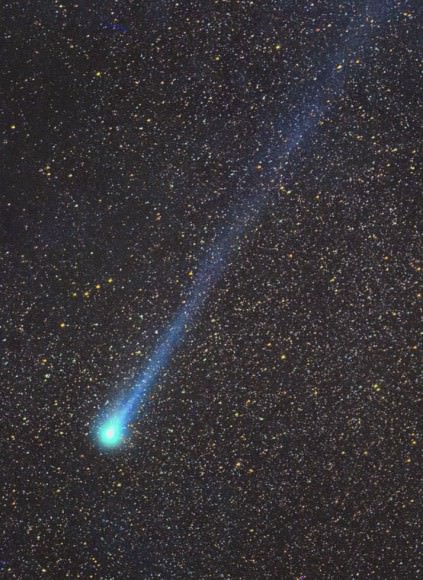
This year’s shower is special in another way. According to Sky and Telescope magazine, meteor stream modeler Jeremie Vaubaillon predicts a bump in the number of Perseids around 1:39 p.m. (18:39 UT) as Earth encounters a debris trail shed by the Comet Swift-Tuttle back in 1862. The time favors observers in Asia where the sky will be dark. It should be interesting to see if the prediction holds.
How To Watch
Already the shower’s active. Go out any night through about the 15th and you’ll see at least at least a handful of Perseids an hour. At nightfall on the peak night of August 12-13, you may see only 20-30 meteors an hour because the radiant is still low in the sky. But these early hours give us the opportunity to catch an earthgrazer — a long, very slow-moving meteor that skims the atmosphere at a shallow angle, crossing half the sky or more before finally fading out.
I’ve only seen one good earthgrazer in my earthly tenure, but I’ll never forget the sight. Ambling from low in the northeastern sky all the way past the southern meridian, it remained visible long enough to catch it in my telescope AND set up a camera and capture at least part of its trail!
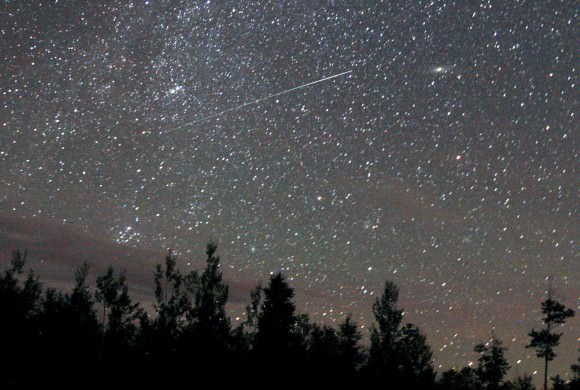
The later you stay up, the higher the radiant rises and the more meteors you’ll see. Peak activity of 50-100 meteors per hour will occur between about 2-4 a.m. No need to stare at the radiant to see meteors. You can look directly up at the darkest part of the sky or face east or southeast and look halfway up if you like. You’re going to see meteors everywhere. Some will arrive as singles, others in short burst of 2, 3, 4 or more. I like to face southeast with the radiant off to one side. That way I can see a mix of short-trailed meteors from near the radiant and longer, graceful streaks further away just like the snow photo shows.
If there’s a lull in activity, don’t think it’s over. Meteor showers have strange rhythms of their own. Five minutes of nothing can be followed by multiple hits or even a fireball. Get into the feel of the shower as you sense spaceship Earth speeding through the comet’s dusty orbit. Embrace the chill of the August night under the starry vacuum.

